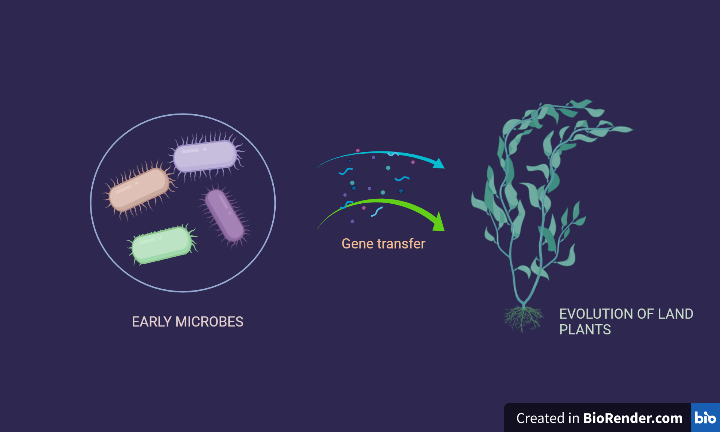Streptophyte algae are considered the ancestors of land plants who shared habitats with primitive microbes. However, scientists have been intrigued by how the algae developed mechanisms to evolve as land plants and survive the soil conditions below the ground. In this exciting study, a team of researchers reveal that primitive microbes could have played a crucial role in the evolutionary process of land plants.

Land plants live in dual environments: a part above the soil surface, absorbing sunlight and air, while the other part is underground in low oxygen conditions. These differing conditions present these plants with different stresses above and below the ground. Land plants have therefore evolved different coping mechanisms to survive in these contrasting environments.
A team of researchers led by R Sankaranarayanan at the CSIR-Centre for Cellular and Molecular Biology, Hyderabad, has found that archaea, the earliest microbial ancestors of multicellular life on earth, could have helped land plants to survive the stresses they face underground. The researchers found that land plants and archaea both have a common protein called DTD2 that is involved in protein synthesis. They find that DTD2 helps in selecting the right kind of amino acids for protein synthesis in low-oxygen conditions.
Amino acids are the building blocks of proteins, and plants absorb them from the soil. But soil is abundant with two forms of amino acids, called the D and L forms. Despite this, living cells build proteins only using L‑amino acids. Accidental addition of D‑amino acids into proteins can kill the cells, and hence, must be avoided. Bacteria, fungi and animals use another protein called DTD1 to identify the D‑amino acids attached to protein synthesis machinery and chop them off.
When plant root cells respire in low-oxygen conditions, a chemical called acetaldehyde is formed, which affects their protein synthesis machinery. In the presence of acetaldehyde, DTD1 fails to identify the wrongly attached D‑amino acids. However, DTD2 can pitch in to do the job. “Using mass spectrometry and enzymatic assays, we show that DTD2 can nullify the effect of acetaldehyde on protein synthesis machinery as well as remove the D‑amino acids,” says Mazeed Mohd, first author of the study.

The researchers searched for DTD2 gene sequences across living organisms. “We find the DTD2 genes only in archaea, land plants and their ancestors. It is missing in other life forms,” says Raghvendra Singh, joint first author of the study. Given that the first land plants emerged three billion years after archaea, the team was surprised to find a protein that is common only between them. They propose two possibilities to explain this. If the DTD2 gene came to all eukaryotes (organisms with nucleated cells, e.g. plants, animals, fungi and protozoa) from archaea, then all of them except the plants have lost the gene. The other option is that archaea directly transferred the gene only to land plants or their ancestors.
The researchers reason that the latter possibility – of archaea transferring the gene to plants — is more probable for two reasons: i) It is easier to explain one-gene transfer event than multiple gene-loss events, ii) Archaea and land plant ancestors are found in overlapping ecosystems, which can explain gene transfer due to their physical proximity.
A type of algae called the streptophyte algae are believed to be the ancestors of land plants. Archaea and streptophyte algae both grow in bogs rich in methane and low on oxygen. “We think that archaea shared its DTD2 gene with streptophyte algae as a result of their cohabitation. As land plants evolved from streptophyte algae, they inherited the DTD2 from the algae,” says Sankaranarayanan.
Umesh Varshney, Professor, Indian Institute of Science, Bengaluru, who studies protein synthesis in bacteria and who was not associated with this study, comments on the importance of the study. He says, “This study raises questions of fine mechanistic details on land plants’ evolution and addresses them with well-designed experiments. The study presents the physiological relevance of DTD2 and brings out its importance in the evolution of land plants.”